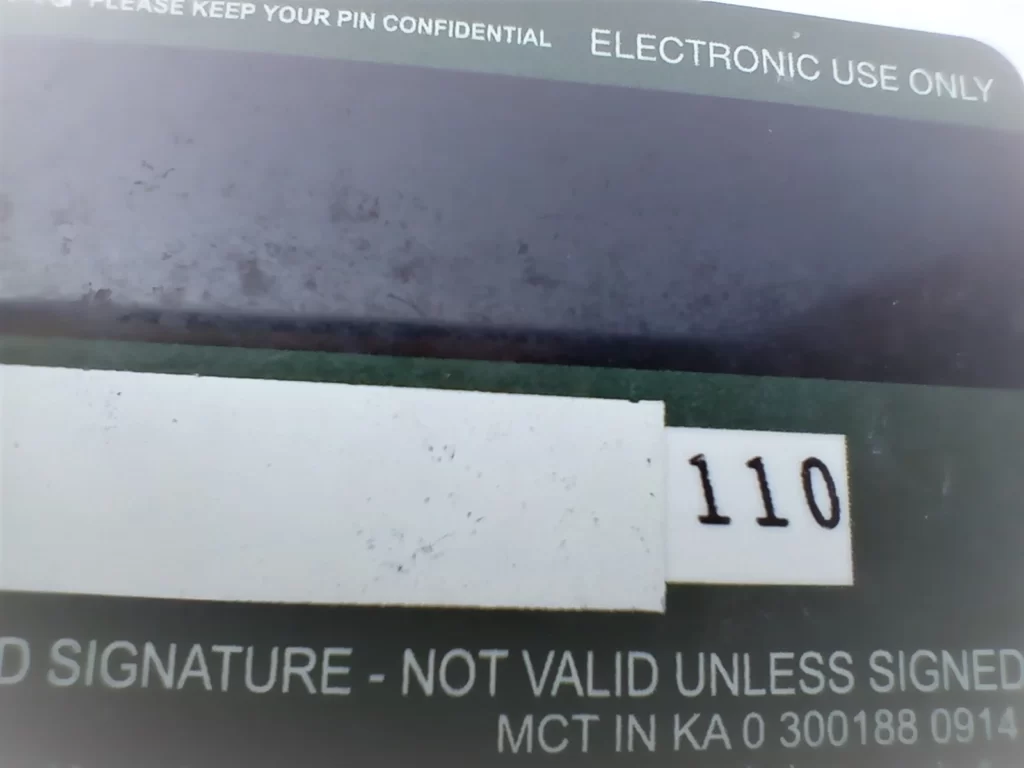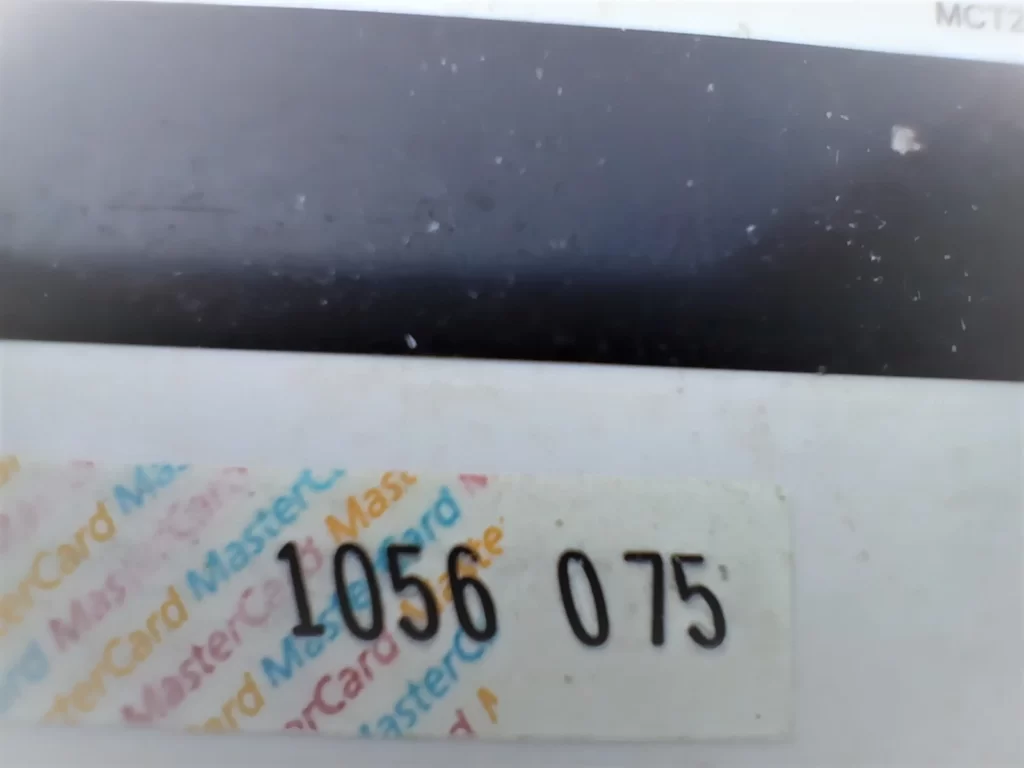When making purchases with a debit card, you might have heard the term “pound key” or “#” being used in conjunction with the card’s security features.
The pound key, also known as the number sign or hashtag, has a specific purpose on a debit card. It is used to denote the end of the Card Verification Value (CVV) or security code, which is a three-digit number that helps verify the cardholder’s identity during online or phone transactions.
Understanding the role of the pound key on a debit card and the importance of protecting your CVV is essential to secure your financial information and prevent fraud.
In this article, we’ll take a closer look at the pound key on a debit card, its purpose, and best practices for securing your CVV.

What is the Pound Key on a Debit Card
The pound key (#) on a debit card typically refers to the CVV or Card Verification Value. The CVV is a 3-digit security code printed on the back of the card (usually on the signature strip) that is used to verify that the card is in the possession of the person making a transaction.
When making an online purchase or other types of card-not-present transactions, you may be asked to enter the CVV along with the card number and expiration date.
This helps prevent fraud by verifying that the person using the card has physical possession of it and is authorized to make the transaction.
It’s important to keep your CVV secure and not share it with anyone who should not have access to your card. Read about, Administrative credit meaning on Debit card
Uses of Pound Key of Debit Card
As mentioned earlier, the pound key (#) on a debit card is typically used to refer to the Card Verification Value (CVV), which is a security code that helps verify that the person using the card has physical possession of it and is authorized to make the transaction.
The CVV is commonly used in online transactions, phone orders, and other types of card-not-present transactions.
It is not typically used for transactions where the card is physically present and swiped or inserted into a card reader, as the card’s magnetic strip or chip can provide the necessary authorization information in those cases.
In addition to being used as a security feature, the CVV can also be used to help identify fraudulent transactions.
If a transaction is attempted using a card number but an incorrect CVV is entered, the transaction may be declined or flagged for review by the card issuer’s fraud prevention system.
Overall, the pound key or CVV is an important component of a debit card’s security measures and helps protect the cardholder from unauthorized transactions and fraud. Read, Can someone steal debit card info from a receipt
“Please Enter Your Card Number Followed by the Pound Key” Meaning
The phrase “please enter your card number followed by the pound key” is typically used as an instruction for entering your debit card number when making a phone or online transaction.
In this context, “card number” refers to the unique 16-digit number printed on the front of your debit card, which is used to identify your account and authorize the transaction.
The “pound key” refers to the “#” symbol on your phone or keyboard, which is used to indicate the end of the card number input.
So, when you see the phrase “please enter your card number followed by the pound key,” you would need to enter your card number using the numeric keys on your phone or keyboard, and then press the “#” symbol to indicate that you have finished entering your card number.
It’s important to be careful when entering your card number and to make sure you have entered it correctly before pressing the pound key, as an incorrect card number could result in the transaction being declined or charged to the wrong account. Know, Stores that accept OTC card
Followed by Pound Key Example
Sure, here’s an example of how to enter your card number followed by the pound key when making a phone or online transaction:
Let’s say you’re making a phone purchase and the customer service representative asks you to provide your card number. You would say or type in your card number like this:
“1234 5678 9012 3456” (without spaces)
After entering your card number, you would then press the “#” or “pound key” on your phone or keyboard to indicate that you have finished entering your card number, like this:
“1234 5678 9012 3456 #”
The “#” symbol tells the system that you have completed entering your card number and that it can now process the transaction.
It’s important to remember that the exact format and steps for entering your card number may vary depending on the merchant or payment processor you are using.
Always follow the instructions provided by the merchant or payment processor to ensure a smooth and secure transaction.

How to Secure Your Pound Key of Debit Card
The pound key on a debit card is typically used to refer to the Card Verification Value (CVV), which is a 3-digit security code that helps verify that the person using the card has physical possession of it and is authorized to make the transaction.
Here are some tips to help you secure your pound key or CVV:
- Keep your debit card secure: The best way to protect your pound key or CVV is to keep your debit card safe and secure. Store your card in a safe place and don’t share it with anyone who should not have access to it.
- Don’t write down your CVV: Avoid writing down your CVV or pound key on paper or storing it in an unsecured digital location. Memorize the code instead.
- Be cautious with online transactions: When making online purchases, ensure that you are on a secure website and that the merchant is reputable. Never enter your CVV on a website that you don’t trust or that doesn’t seem secure.
- Don’t share your CVV: Never share your CVV or pound key with anyone, even if they claim to be from your bank or a legitimate company. Scammers can use this information to make unauthorized purchases.
- Monitor your transactions: Keep an eye on your debit card transactions and report any suspicious activity to your bank or card issuer immediately.
Note: By following these tips, you can help protect your pound key or CVV and reduce the risk of unauthorized transactions or fraud.
Know about using an OTC card online.
Conclusion
Protecting your debit card and its security features is crucial to prevent fraud and unauthorized transactions.
It is essential to keep your card safe and secure, avoid writing down your CVV, and monitor your transactions regularly.
In today’s digital world, financial transactions have become more convenient but also more vulnerable to fraud.
Understanding the importance of card security and taking steps to secure your debit card and CVV can help you stay protected and avoid potential financial losses.
FAQ’s
Is Pound Key and CVV are Same
Yes, the Pound key and CVV are the same things. CVV also known as the Pound key is available on the back side of any debit card.